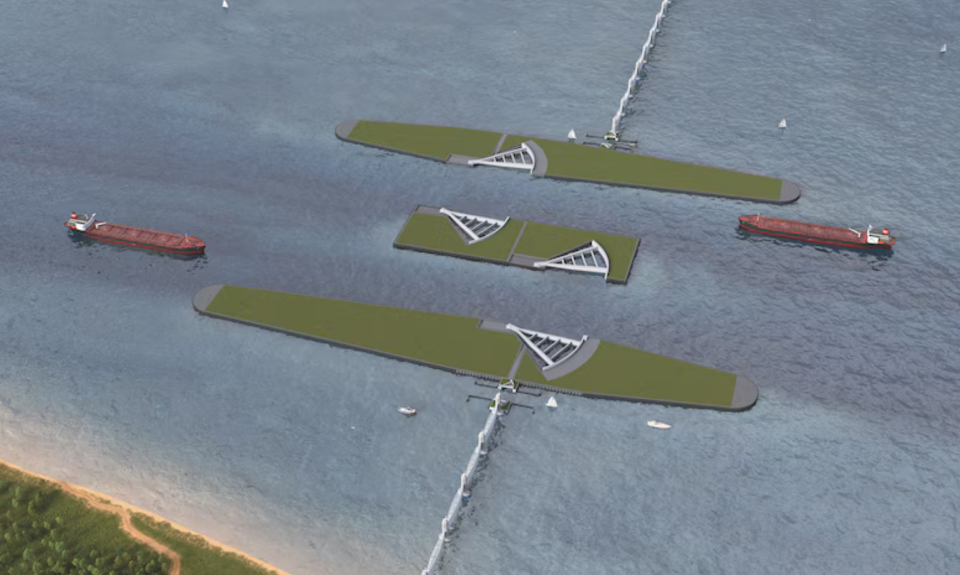What is the Ike Dike?
A proposed project could help limit the impacts of a hurricane’s storm surge on the Texas coastline, but a ballooning price tag and project scope have raised questions about whether the system will ever be completed.
The proposed coastal barrier system includes enhancing seawalls, raising dunes and building what is known as the Ike Dike, a gate system that would protect the Houston shipping channel from flooding.
The project was originally conceived by experts at Texas A&M University in the months after Hurricane Ike’s devastating strike on the coastline, which led to the cyclone becoming the state’s costliest disaster at the time.
Although the cyclone was classified as a Category 2 at the time of landfall, its impact was substantial, with estimated damages totaling approximately $30 billion. Adjusting for inflation, this figure would amount to about $43 billion in 2024, underscoring how costly a direct strike is.
Parts of the project, specifically the Ike Dike, are inspired by flood control systems in the Netherlands, which not only have proven to be successful but also have had a minimal impact on the environment.
If plans become a reality, massive vertical gates towering several stories tall would close, reducing a surge by about 50% or more in Galveston Bay, according to estimates by the U.S. Army Corps of Engineers.
7 FACTS TO KNOW ABOUT HURRICANES
Despite evidence of the region’s vulnerability, as produced by hurricanes Rita and Harvey, the multiphase project appears no closer to breaking ground.
The Corps was recently allocated $500,000 for planning and design work, but that is a drop in the bucket compared to the final price tag, which has ballooned from just a few billion to more than $50 billion.
"The Coastal Texas Project is one of the largest projects in the history of the U.S. Army Corps of Engineers," said Col. Rhett A. Blackmon, USACE Galveston District commander. "This project is important to the nation for many reasons. Not only will it reduce risk to the vulnerable populations along the Texas coast, but it will also protect vital ecosystems and economically critical infrastructure vital to the U.S. supply chain and the many global industries located here."
In addition to being home to the fourth-largest metro in the U.S., Southeast Texas also has the largest concentration of oil refining and chemical plants. If those facilities are damaged, it can have a ripple effect on the nation’s economy.
The Coastal Texas Project consists of 18 unique projects that could take decades to build, according to Corps estimates.
While a significant portion of the funding would be allocated to the Ike Dike, projects spanning from South Padre Island to the Upper Texas Coast would also reap substantial benefits.

WHEN IS THE TYPICAL LAST HURRICANE STRIKE ON THE US COAST?
According to NOAA historical data, the Lone Star State is impacted by either a tropical storm or a hurricane about once a year.
The longest period during which the state went without experiencing a hurricane was a decade, spanning from 1989 to 1999.
While hurricane activity is common in the region, a significant, direct strike on the Galveston area is relatively rare. Apart from Ike in 2008 and Alicia in 1983, one must look back to the early 1900s to find a storm that caused historic wind and surge damage.
The 1900 Galveston Hurricane stands as the deadliest storm in U.S. history. The absence of a seawall led to a devastating tidal surge that claimed the lives of 8,000 people and left thousands more homeless.
Less than a year after the disaster, the Texas State Legislature authorized the construction of a seawall for Galveston. The initial segment was completed on July 29, 1904, with further enhancements implemented over the following decades.
Original article source: What is the Ike Dike?

